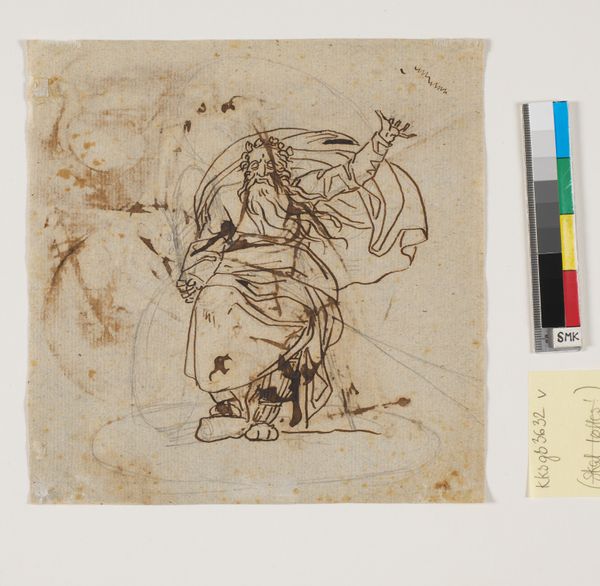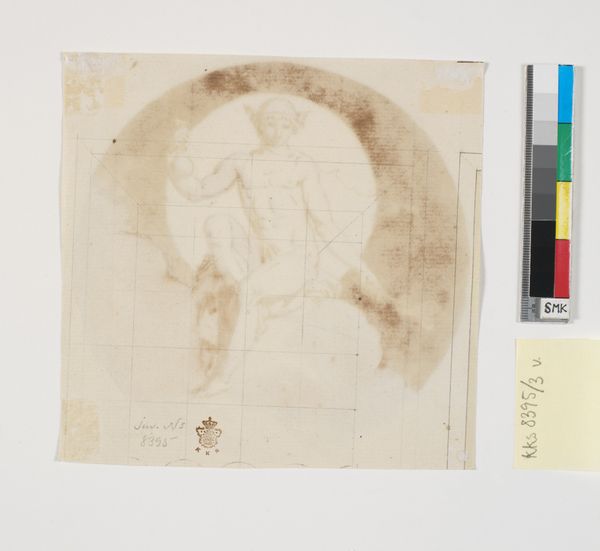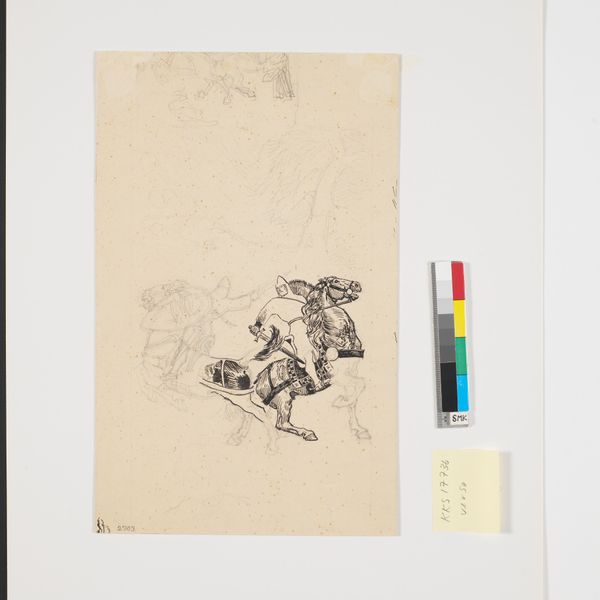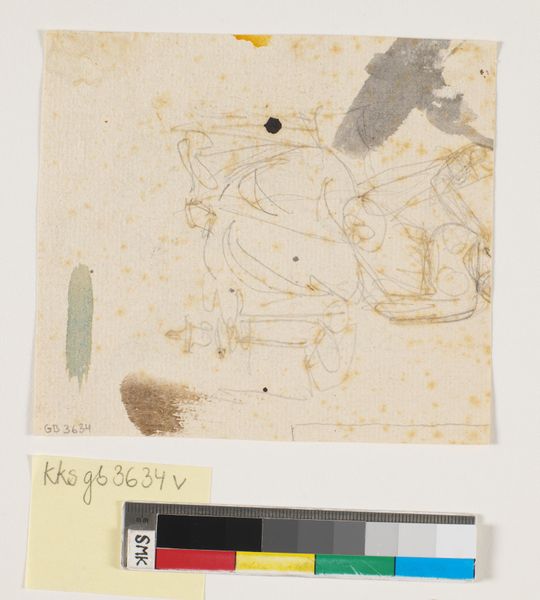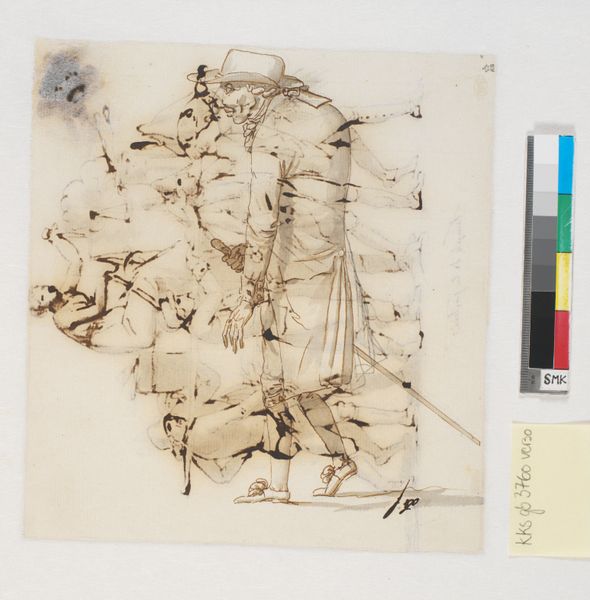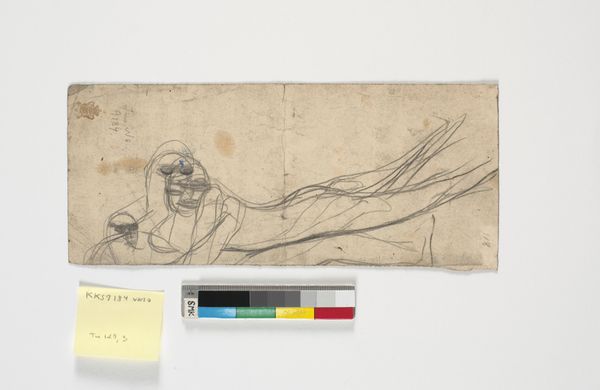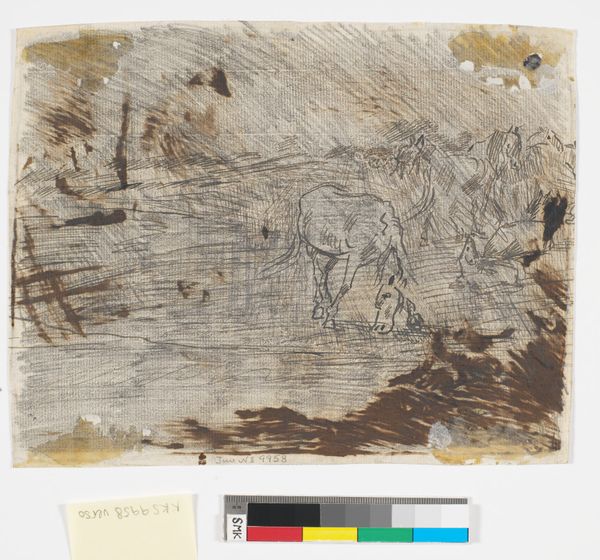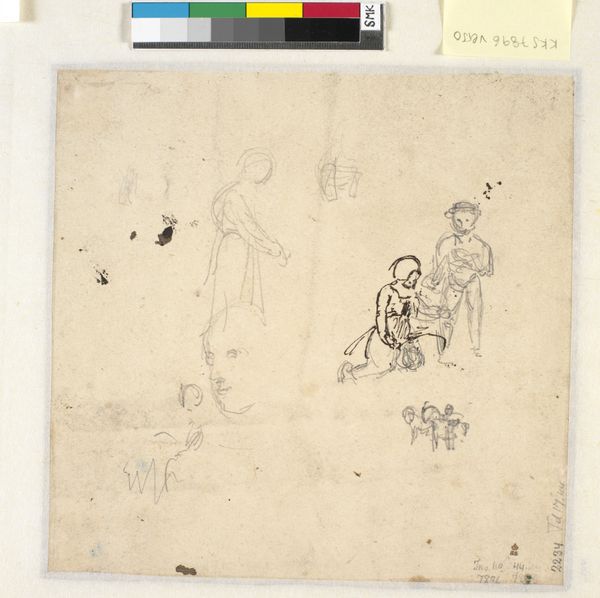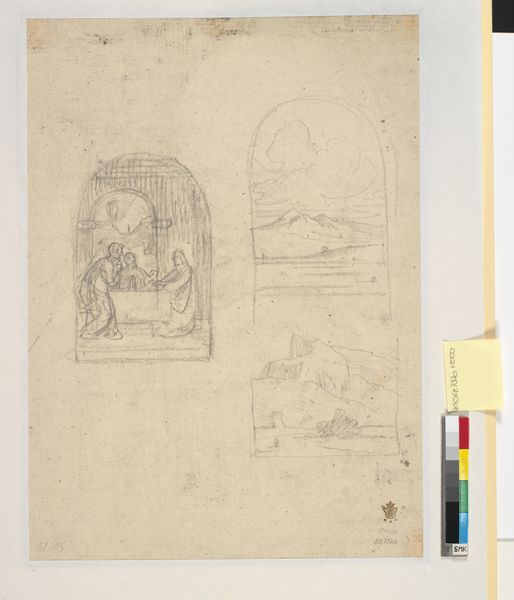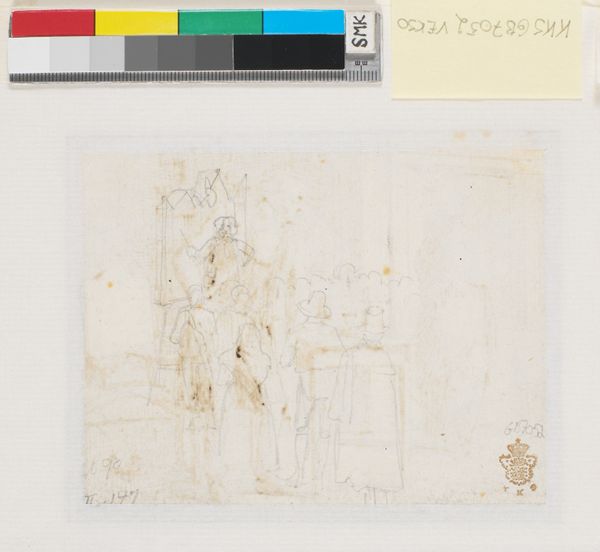
Udkast til øverste del af illustration til Pontoppidan, Odysseus rejser og eventyr 1914
0:00
0:00
drawing, ink, pencil
#
drawing
#
narrative-art
#
figuration
#
ink
#
ancient-mediterranean
#
pencil
#
line
#
history-painting
Dimensions: 270 mm (height) x 180 mm (width) (bladmaal)
Editor: This is Niels Skovgaard's "Udkast til øverste del af illustration til Pontoppidan, Odysseus rejser og eventyr," a pencil and ink drawing from 1914. It’s a dynamic sketch, very linear, depicting figures that seem to be from ancient times, maybe Greece. What's your interpretation? Curator: This drawing, intended as an illustration for Pontoppidan’s retelling of the *Odyssey*, offers a fascinating glimpse into the role of classical imagery in early 20th-century Danish culture. Skovgaard uses a stark, almost academic line, reminiscent of historical painting. Considering the political climate of 1914, on the cusp of World War One, how might the *Odyssey* resonate with its audience? Editor: A story of a long and difficult journey, maybe about enduring hardship and finding your way home? Curator: Exactly! And about leadership. Odysseus wasn’t just about physical strength; he was also cunning and persuasive. Skovgaard's choice to depict him, and perhaps Athena, as these almost heroic figures, what does it tell us about how classical narratives were being used? Editor: To reinforce certain ideals or values, maybe? Like leadership and resilience? Curator: Precisely. Think about the institutions that might have supported this work: the publisher, the educational system, even the museum itself. What role did they play in promoting these interpretations of history? Editor: I hadn't considered it that way. It’s interesting to think about how illustrations like these shape our understanding of history, not just as historical records, but as active participants in a cultural conversation. Curator: Absolutely. And how those conversations change over time. What was valued then might be interpreted differently now.
Comments
No comments
Be the first to comment and join the conversation on the ultimate creative platform.

